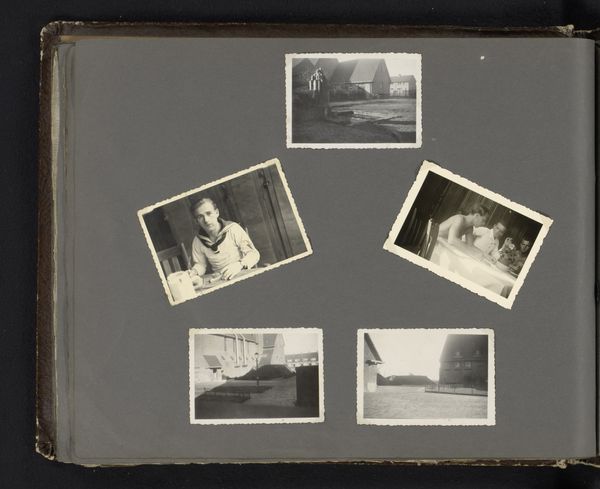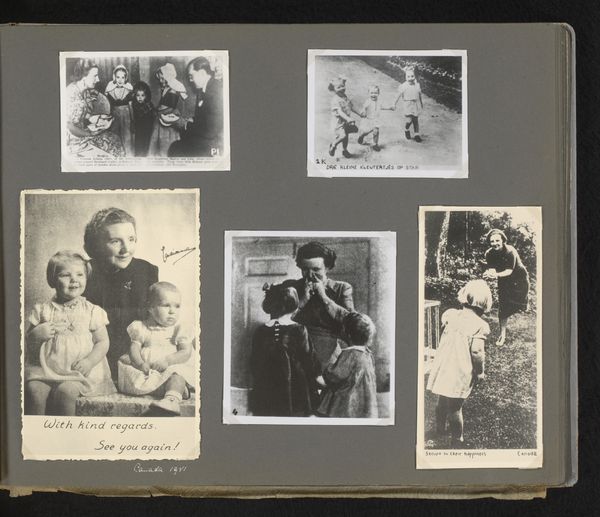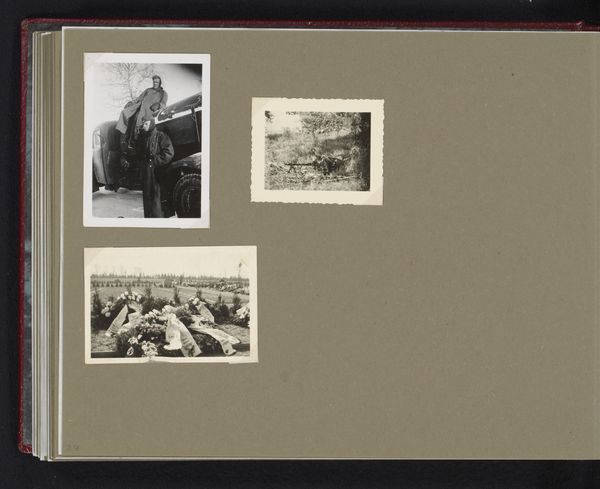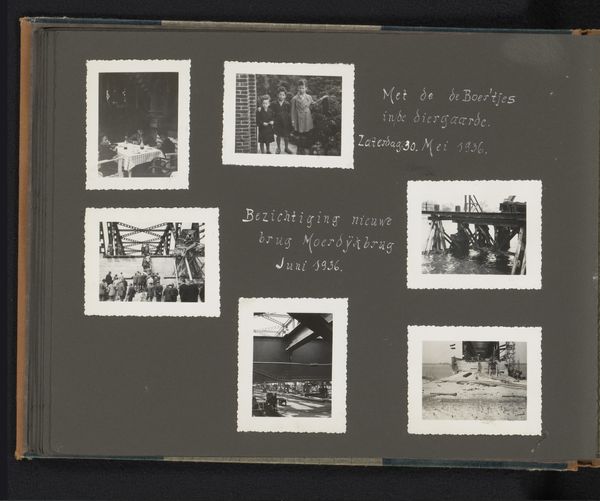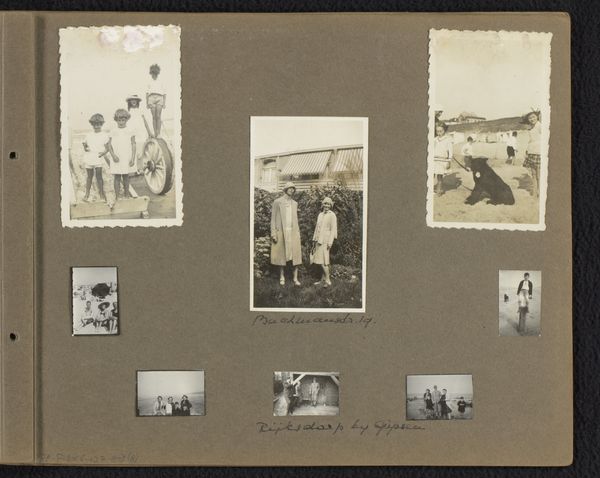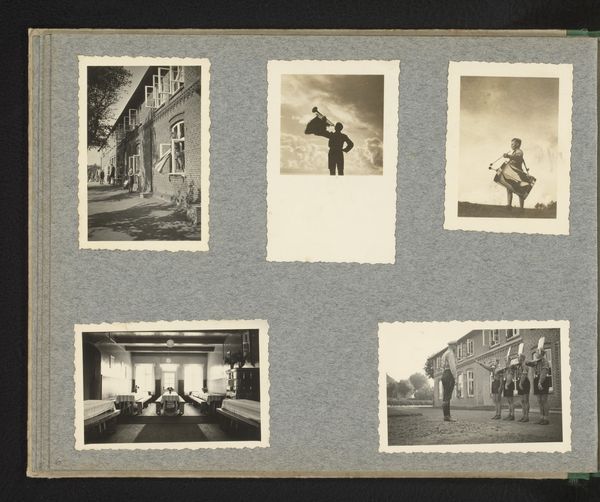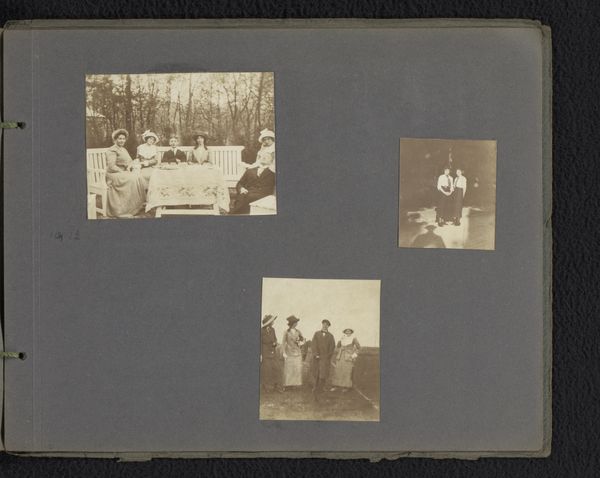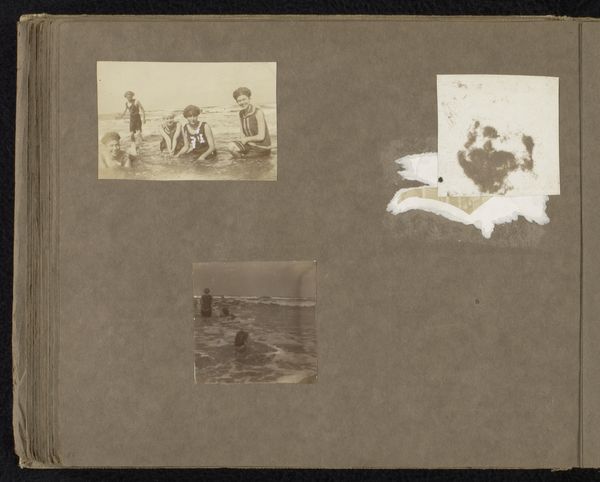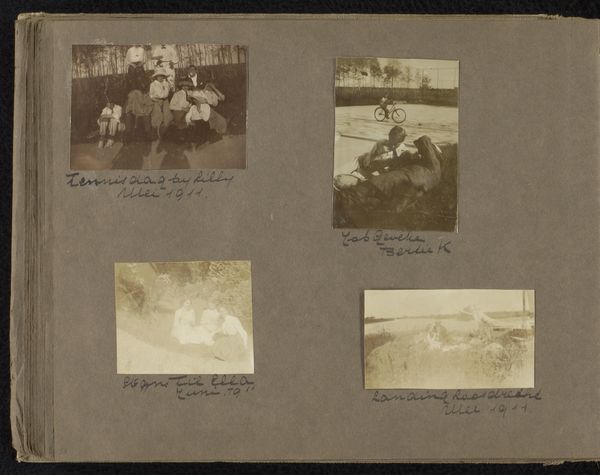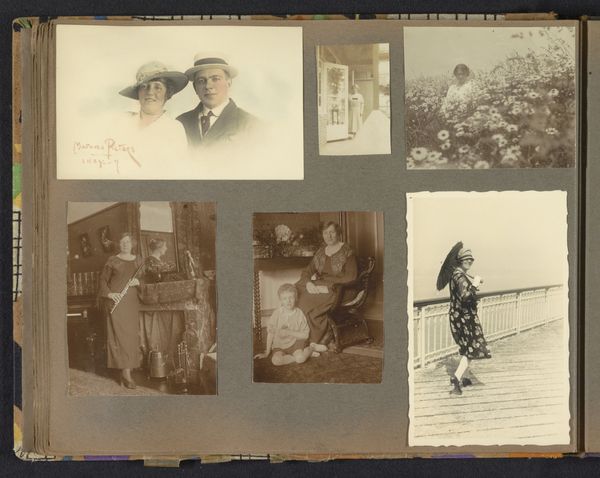
Diverse afbeeldingen waaronder een mogelijke reproductie van een brandplaatje 1900 - 1950
0:00
0:00
print, photography, albumen-print
#
portrait
#
aged paper
#
still-life-photography
#
homemade paper
#
paper non-digital material
#
reduced colour palette
#
muted colour palette
# print
#
sketch book
#
landscape
#
photography
#
personal sketchbook
#
visual diary
#
genre-painting
#
storyboard and sketchbook work
#
paper medium
#
modernism
#
albumen-print
Dimensions: height 236 mm, width 316 mm
Copyright: Rijks Museum: Open Domain
Curator: This intriguing collection of images, entitled "Diverse afbeeldingen waaronder een mogelijke reproductie van een brandplaatje," is from the period 1900 to 1950. The album itself seems to be an intimate glimpse into a life, captured through photographs, prints and drawings on paper. What strikes you first about its appearance? Editor: Well, I am immediately drawn to the monochrome palette and the clear structure within the collection, the sharp division in images draws me to each individual composition. There's a definite grid aesthetic, which is lovely. Curator: It truly gives one the sense of a private journal, a visual diary perhaps reflecting on the early to mid 20th Century. The photographs hint at both the personal, the portraits, and the landscapes of everyday life in the Netherlands at this time. Editor: Absolutely. And considering each photograph, there’s such depth in the black and white contrast which emphasises a sense of temporality; a capture from one's personal history. You mentioned the landscapes, what specific elements capture that? Curator: The photograph depicting a canal lock, for instance, illustrates the Dutch mastery over water, yet also speaks to the socio-political realities of water management and its importance in the national identity. The boat laden with people offers an equally rich social canvas. Editor: Semiotically, that canal lock suggests so much more than water control. It represents the divisions within society and access to resources—or lack thereof—the gatekeeping, if you will. Curator: Precisely, that reading resonates deeply. And alongside these photographs of individuals and sites we see artistic prints with clear references to social allegiances and resistance of sorts at that time. This collection isn't merely aesthetic; it's a repository of memory, a mirror reflecting the turbulent decades it spans. Editor: It prompts one to wonder about the unseen hands that arranged these images with care, crafting meaning through the adjacency of images. I find that idea almost romantic. Curator: Yes. And, when we consider this entire work as a piece itself, we have a collection offering multiple access points and a glimpse into various intersecting topics of memory, and experience through a challenging period of change in history. Editor: It certainly enriches our understanding of photographic practices of that era, and the narrative value they embody collectively as a group.
Comments
No comments
Be the first to comment and join the conversation on the ultimate creative platform.

